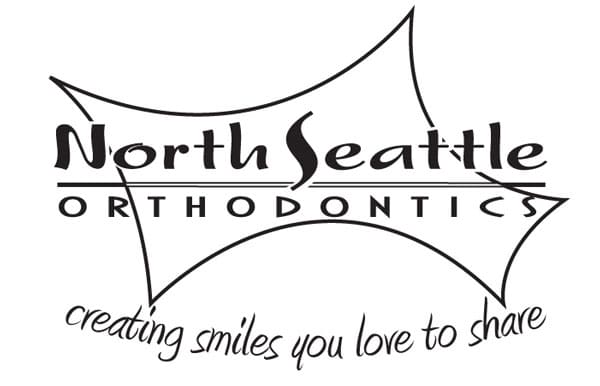Around four million Americans wear braces on any particular day. They’re an important part of orthodontic care. When you’re wearing braces, taking good care of them is important. That includes your diet. Let’s go through how to choose braces-friendly food.
Foods You Need to Avoid When Wearing Braces
When wearing braces, it’s important to avoid certain foods that can damage the braces or get stuck in them. That tends to be easier if you’re an adult rather than a child, but it’s important regardless of age.
Hard foods, such as candy, nuts, and popcorn, are big. These can break or dislodge brackets and wires.
Sticky or chewy foods are also a problem. They can get wedged up in your braces and become difficult to remove. Examples include caramel, taffy, and chewing gum.
Crunchy or tough foods, such as apples, carrots, and crusty bread, are also on the list of things to avoid. They can damage the wires and brackets.
Sugary and/or acidic foods and drinks, such as soda, sports drinks, and candy, are already things that can damage your teeth. But it can be even worse if you have braces, as they can promote tooth decay and demineralization around the braces.
Tough meats like steak or beef jerky can be difficult to chew and may damage the braces. Look into softer options.
Choose Soft, Easy-To-Eat Foods
Soft foods are the easiest when you’re trying to avoid damaging your braces. This is especially important after you first get braces and after each time your braces are tightened.
After you’ve tightened your braces, you’ll also want to avoid foods that increase your sensitivity. Foods in extreme temperatures, like ice cream, can increase the pain in your mouth.
Best Practices for Eating With Braces
There are things you can do (or teach your children) to prevent damage to your braces, regardless of what you’re eating. First, cut your food into small pieces. This makes it easier to chew and reduces the risk of damaging the braces.
Chew with your back teeth. This reduces the pressure on the front teeth and braces.
Rinse your mouth after eating. Swishing water around your mouth after eating can help dislodge any food particles that may be stuck in your braces.
If a bracket or wire is causing discomfort, apply some orthodontic wax to the area to reduce irritation.
And keep up good oral hygiene practices. Use a softer toothbrush and fluoride toothpaste to brush your teeth multiple times daily. Be sure to brush each tooth individually, including the brackets and wires of your braces. You may need to angle your brush to reach all the surfaces around the brackets.
Don’t get frustrated, either. Like with any change, getting used to braces and changing your routines can be difficult. You just need to be patient and allow it to take some time. Your orthodontist can give you the advice to help you stay on track.
Planning Braces-Friendly and Delicious Meals
You may want to plan different braces-friendly meals that incorporate all the things you need. These meals should include soft or easy-to-chew protein sources, cooked vegetables, and soft or easy-to-chew carbohydrates. That way, you’ll get a balanced diet without causing problems.
Stir-fry is one option that people of all ages will love. Soft stir-fry made with cooked vegetables like peppers, onions, and mushrooms, and soft meats like shrimp or chicken, served with soft rice, is a great option for those with braces.
Liquid foods are always an easy choice, particularly for lighter meals. Soups made with soft ingredients like pureed vegetables or lentils and served with soft bread or rolls are easy and nutritious. Plus, they’re easy to customize based on your tastes and needs.
If you don’t have that advanced a palate, there are more options out there. Try baked chicken and soft vegetables like roasted sweet potatoes, squash, or steamed broccoli.
A soft grilled cheese sandwich made with soft bread and melted cheese is a great option for lunch or dinner. Just make sure not to over-toast it since you can end up with tough, hard-to-chew corners.
It may take some trial and error to find nutritious and delicious things, so don’t be afraid to experiment. You could even sit down with a nutritionist and get their recommendations.
Consider the Specifics of Your Meals
There are also specific things you might want to keep in mind to support your nutritional needs or taste when you’re creating a braces-friendly diet.
For a more breakfast-friendly item, consider smoothies. Try smoothies made with soft fruits like bananas, berries, and mango, along with yogurt, milk, or a milk alternative like almond milk.
If you want more protein in your diet, you have options. For example, scrambled eggs with soft toast or a soft English muffin is a great breakfast or lunch option for those with braces.
Soft tacos made with cooked ground beef, soft tortillas, and shredded lettuce are a delicious choice for those with braces who like extra spice. You can also add other soft ingredients like avocado, tomato, and cheese.
Start Shopping for Braces-Friendly Food Today
There are a lot of options when it comes to braces-friendly food, so you don’t have to stick to bland basics. Instead, try experimenting, and find meals that you and your children all enjoy.
Do you need orthodontic care for yourself or your children? Contact North Seattle Orthodontics today to get started.

